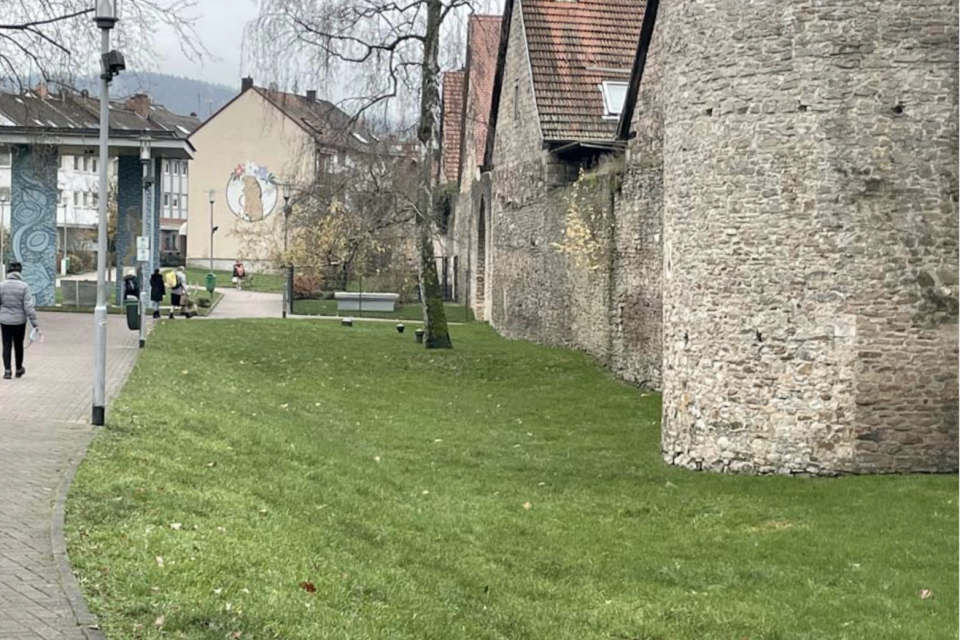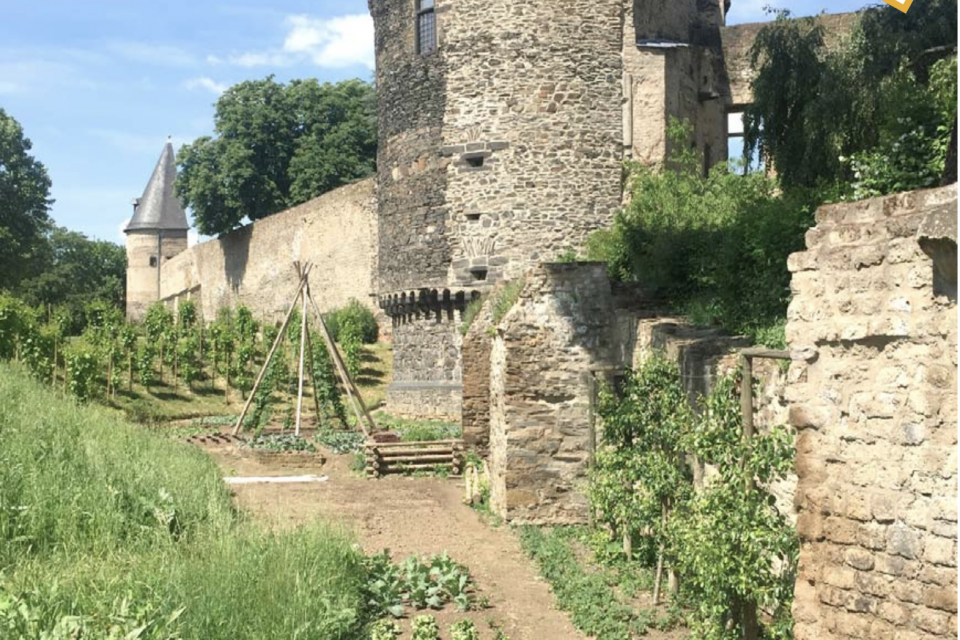"Urban gardening in Bad Orb: for sustainable urban development"
The mission statement for Bad Orb has a clear focus: the town should be sustainable, attractive and economically successful. A large number of measures are planned that aim to increase the quality of living and quality of life, improve the quality of stay, revitalize the city centre and promote accessibility and sustainable mobility. Involving citizens in urban gardening projects is an important part of this plan. The active participation of residents in the design of public green spaces promotes a strong sense of community and creates a strong identification with the city. The communally designed green oases become meeting places for social interaction and cooperation and thus contribute to a central goal of the "Vibrant City" program. We worked on ideas for this and developed a holistic concept.
After familiarizing ourselves with the basic principles, the concept was developed through public participation.



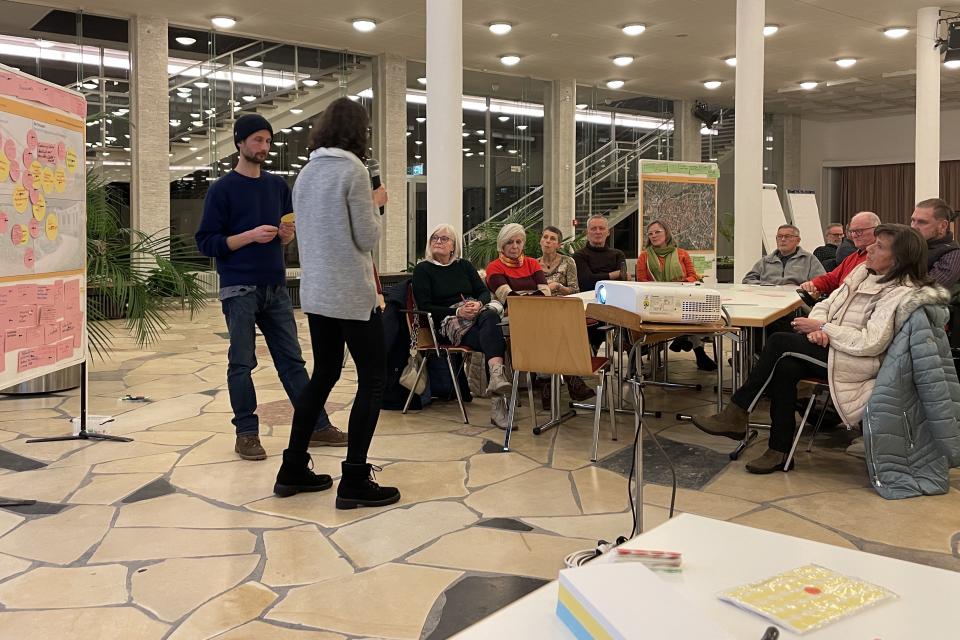
The vast majority of participants were already well informed about urban gardening and had gardening experience. The concept consisting of a core project and satellite was well received. The community garden motif was familiar to many and gardening in communal beds was preferred to gardening in private beds. The idea was that there would be enough people to run a community garden. There were many specific wishes as to what the garden should offer, such as a café, space for networking and joint processing of the harvest. The participants made it clear that they are positive about a community garden if it has a clear concept and responsibility for the garden is clearly and sustainably regulated. This speaks in favor of the installation of a garden office including staff, as proposed in the concept. Overall, the picture that emerged was that the majority of participants were interested in the topic of "urban gardening", but that the desire to participate was limited. It seems advisable to start small with both the community garden and the "Edible City" and to give the people in and around Bad Orb time to grow with the project.
Concept for the core area in Bad Orb:
Community garden as a basic building block:
This is where an initial community of interested parties develops. For interested parties who are not yet organized in the project, the community garden is a first point of contact. This place is the heart of the entire urban gardening project in Bad Orb, so to speak.


The community garden forms the centerpiece and is the central point of contact for the entire urban gardening project. With an area of around 600 to 1,000 square meters, the garden not only offers raised beds for communal gardening, but also functional facilities such as toilets, workshop areas (both outdoors and partially covered), a small stage and a café. This garden has a clear mission: to create a sustainable, social and ecological platform where people from the neighborhood can come together to grow fruit, vegetables and flowers. In addition to promoting environmental sustainability, the community garden provides space for community bonding, education and access to fresh, locally grown food. It is not only a place to relax, but also a space for learning and social engagement.
"Satellites" are connected to this community garden.
These satellites/garden islands are places in the city where a group comes together and wants to cultivate/build a garden
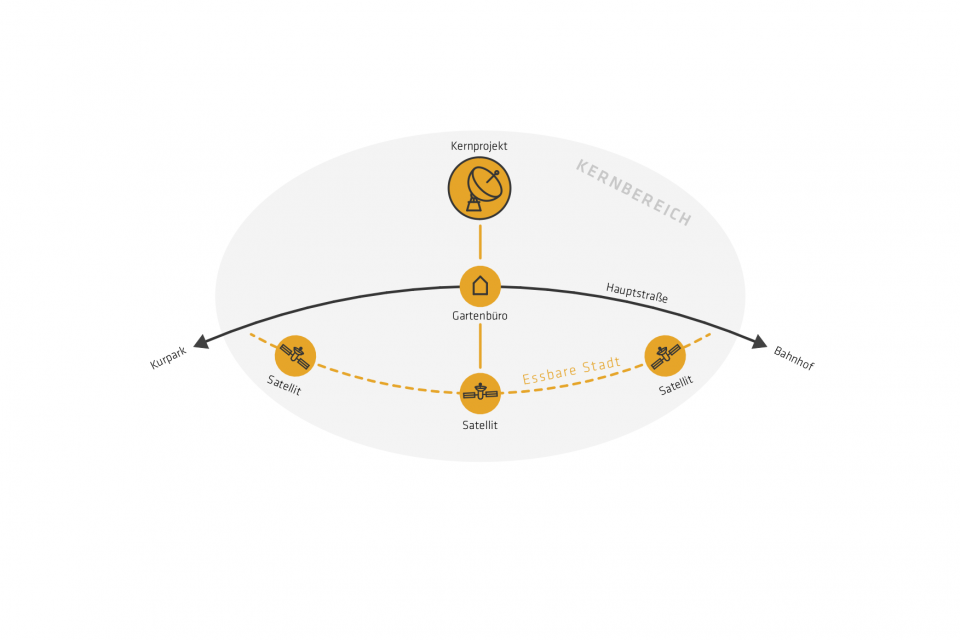
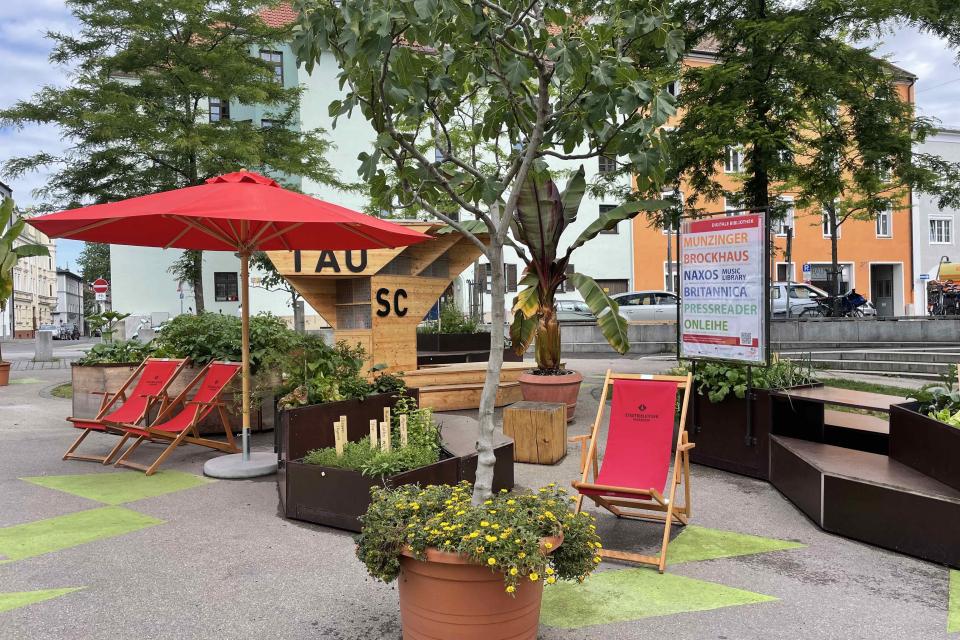
The satellites are decentralized locations in the city that are connected to the community garden. They offer various social organizations the opportunity to develop their own small-scale projects at their locations and thus make visible contributions to the overall concept of urban gardening in Bad Orb. Whether day-care centres, retirement homes, the adult education centre or other institutions - they all have the chance to implement their own sub-projects with individual focuses. One example of the versatility of this approach is the integration of a small garden or raised bed in a daycare center, where children can learn how to grow fruit, vegetables and flowers in a playful way. This promotes a connection to nature and teaches children important skills and environmental awareness. Similarly, an urban gardening concept in a retirement home can include the creation of a barrier-free garden or raised bed where older residents can actively participate in gardening. This increases exercise, social interaction and mental activity for the elderly, and the home-grown food can improve nutrition and quality of life. The concept also offers the opportunity to redesign public spaces, such as parklets, which turn former parking spaces into attractive places to linger. In addition, the various planters in the urban landscape can be given a uniform design, which is a significant
